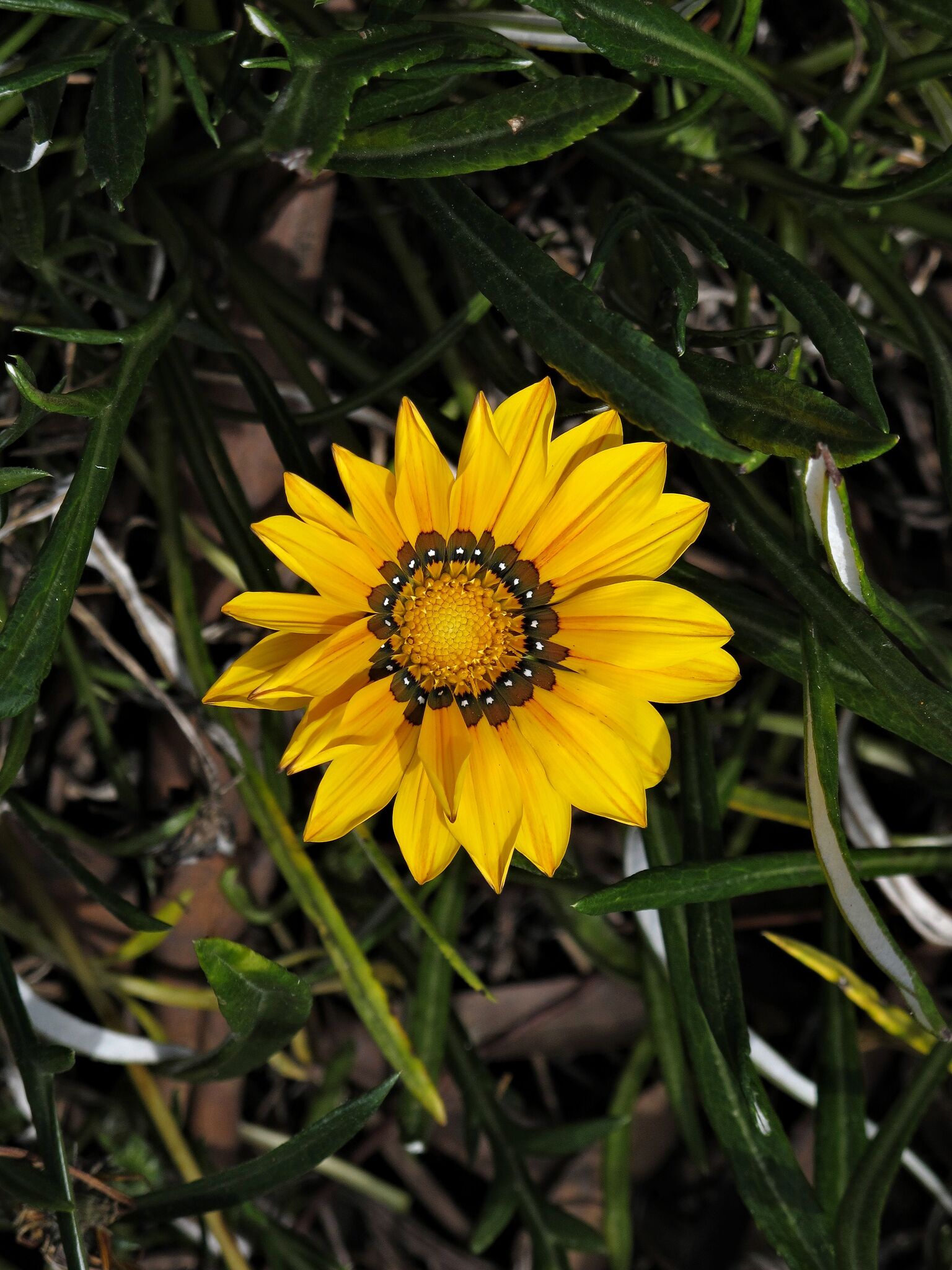
Probably after Theodorus Gaza (1400–75), who translated Theophrastus’ (c. 372–286 BC) botanical works into Latin from Greek.
Perennial or rarely annual herbs or subshrubs, white-hairy. Stems decumbent, often very short. Leaves usually basal, rarely along stems and alternate, margins entire to divided, petiolate. Capitula radiate, terminal, solitary, with stalks. Involucral bracts in 2 or 3 rows, overlapping, joined at base to form a cup, more or less equal. Receptacle pitted, flat or convex. Ray florets sterile, ligulate, usually orange with a dark basal spot and outside stripe. Disk florets bisexual, tubular, yellow. Achenes obovoid, hairy. Pappus of many fine scales.
Two species have become weakly naturalised in Australia, usually in urban areas and on coastal dunes.
Joined involucral bracts; orange ray florets with a dark spot at the base.
About 16 species from southern Africa, one species extending to E tropical Africa.
Roessler (1959).
Source: (2002). Dahlia. In: . Horticultural Flora of South-eastern Australia. Volume 4. Flowering plants. Dicotyledons. Part 3. The identification of garden and cultivated plants. University of New South Wales Press.
